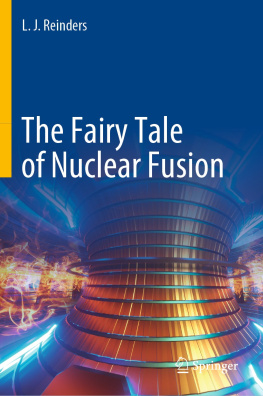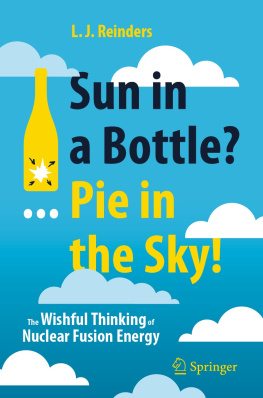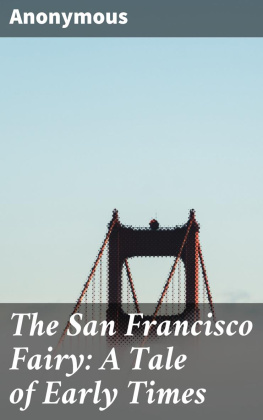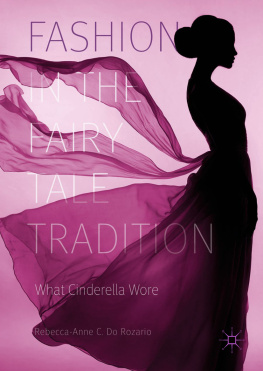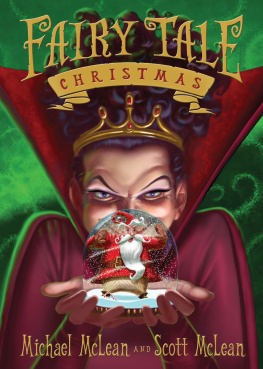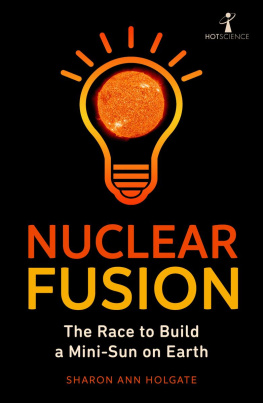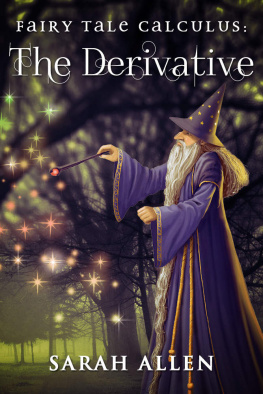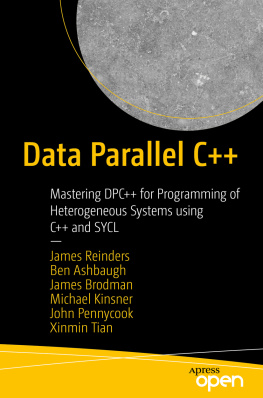L. J. Reinders - The Fairy Tale of Nuclear Fusion
Here you can read online L. J. Reinders - The Fairy Tale of Nuclear Fusion full text of the book (entire story) in english for free. Download pdf and epub, get meaning, cover and reviews about this ebook. year: 2021, publisher: Springer International Publishing, genre: Children. Description of the work, (preface) as well as reviews are available. Best literature library LitArk.com created for fans of good reading and offers a wide selection of genres:
Romance novel
Science fiction
Adventure
Detective
Science
History
Home and family
Prose
Art
Politics
Computer
Non-fiction
Religion
Business
Children
Humor
Choose a favorite category and find really read worthwhile books. Enjoy immersion in the world of imagination, feel the emotions of the characters or learn something new for yourself, make an fascinating discovery.
- Book:The Fairy Tale of Nuclear Fusion
- Author:
- Publisher:Springer International Publishing
- Genre:
- Year:2021
- Rating:3 / 5
- Favourites:Add to favourites
- Your mark:
- 60
- 1
- 2
- 3
- 4
- 5
The Fairy Tale of Nuclear Fusion: summary, description and annotation
We offer to read an annotation, description, summary or preface (depends on what the author of the book "The Fairy Tale of Nuclear Fusion" wrote himself). If you haven't found the necessary information about the book — write in the comments, we will try to find it.
The Fairy Tale of Nuclear Fusion — read online for free the complete book (whole text) full work
Below is the text of the book, divided by pages. System saving the place of the last page read, allows you to conveniently read the book "The Fairy Tale of Nuclear Fusion" online for free, without having to search again every time where you left off. Put a bookmark, and you can go to the page where you finished reading at any time.
Font size:
Interval:
Bookmark:


This Springer imprint is published by the registered company Springer Nature Switzerland AG
The registered company address is: Gewerbestrasse 11, 6330 Cham, Switzerland
Science in this century has become a complex endeavour. As scientific knowledge expands, the goal of general public understanding of science becomes increasingly difficult to reach.
Nuclear fusion is the process that powers the stars, including our own Sun. As soon as these stellar processes were understood (in the early 1920s), people started dreaming about harnessing their power both for the benefit and for the destruction of mankind on Earth. In the latter, we have succeeded. We now possess bombs that can destroy the Earth and all that is on it in a matter of hours or less. The other dream of an inexhaustible clean source of energy that will save mankind from the horrors of climate change and pollution has not yet become a reality. Will it remain a fantasy or is there a fair chance that the twenty-first century will see it come true? This book will tell the story, the history and content of the global efforts to realise this dream, an effort that has been going on now for close to seven decades without a solid trustworthy result being in sight. Should we despair or is it reasonable to continue to sink billions of dollars, euro, or yen into this effort?
The quest for fusion power has a long history, and its failure to live up to its early promise has apparently also diminished the interest in properly describing its science and technology for the general public. I intended my book to fill this void and describe developments in nuclear fusion from the early beginnings up to and including the latest efforts with huge international collaborations like the Joint European Torus ( JET ) and the International Thermonuclear Experimental Reactor ( ITER ) and individual small-scale enterprises with small tokamaks and other devices. The book that I had in mind at first was supposed to be a plea for fusion, an urge to put more money into this seemingly promising venture in order to speed up the process.
I was optimistic and started writing this book as a proponent of fusion. As many others who had read the same news items, I was taken in by the optimistic language and the multiple breakthroughs that were reported. Being mostly ignorant of the scientific and technical details and of its history, I saw nuclear fusion as one of the most promising ways of combating climate change. The hesitantly dawning prospect of an age of clean and affordable energy based on nuclear fusion as the worlds primary energy source seemed a good time for writing a book, accessible to the general public, which describes its history and explains and summarises the progress made so far, without hiding any of the difficulties and problems.
In the course of writing, this all changed when I discovered from reading and studying some of the scientific literature that nuclear fusion was a fantasy pursued by single-minded individuals that were apparently unable to see reason and the fundamental failings of their efforts. The media only report the successes: record temperatures and confinement times which can be brought with a blazing headline like Chinas artificial sun sets world record with 100 second steady-state high performance Plasma, while the failures are ignored. When you only read the articles on fusion in the general press, it looks like a succession of breakthroughs without end, while the real situation kept hidden from the public mainly consists of failures. I felt fooled and decided to backtrack and write the book with a completely different message in mind: stop the way this is being done now, take some time to reflect on the facts and what they bear out. No longer continue to waste all this money and effort, which can be spent far better.
Nuclear fusion, and research into nuclear fusion, nowadays only focuses on the production of (hopefully) cheap, but in any case inexhaustible and unlimited energy without carbon dioxide emissions, to combat climate change and whatever benefits for mankind you can further think of. The only resource needed is just plain water! At least that is the story that continues to be repeated over and over again. Even purely scientific papers often start in the introduction with some waffle about nuclear fusion and the great prospects that are in store for mankind if the process could be controlled, etc. The scientists pursuing this research are all drawn into such blabbering talk, while in their hearts and even in their minds they are not one bit interested in such goals. They dont do science, at least I hope they dont, with the goal of selling cheap or any other energy to society, or to advertise their activity as something that has such a mundane result. The great power of science has always been that it could be pursued for sciences sake without the promise of any use in the short or long term. Had that been their goal in life, they would have been better advised to become oil merchants or power utility managers. Scientists do science to understand something about nature and that should be enough to obtain funding as long as their project proposals satisfy some clear standards. For instance, research in high energy physics, e.g. at CERN, has always been able to secure funding, even for hideously expensive accelerators, just by pointing out that it would be a great thing to find the Higgs or some other particle and get some further confirmation of the Standard Model. Nothing more was needed, and nothing more should be needed. So, also when studying nuclear fusion processes scientists hope to understand, for instance, how a plasma behaves, how the fusion processes in the stars work and whether we can copy them here on Earth, not for the sake of getting power on the grid, but in order to understand these processes.
Font size:
Interval:
Bookmark:
Similar books «The Fairy Tale of Nuclear Fusion»
Look at similar books to The Fairy Tale of Nuclear Fusion. We have selected literature similar in name and meaning in the hope of providing readers with more options to find new, interesting, not yet read works.
Discussion, reviews of the book The Fairy Tale of Nuclear Fusion and just readers' own opinions. Leave your comments, write what you think about the work, its meaning or the main characters. Specify what exactly you liked and what you didn't like, and why you think so.

